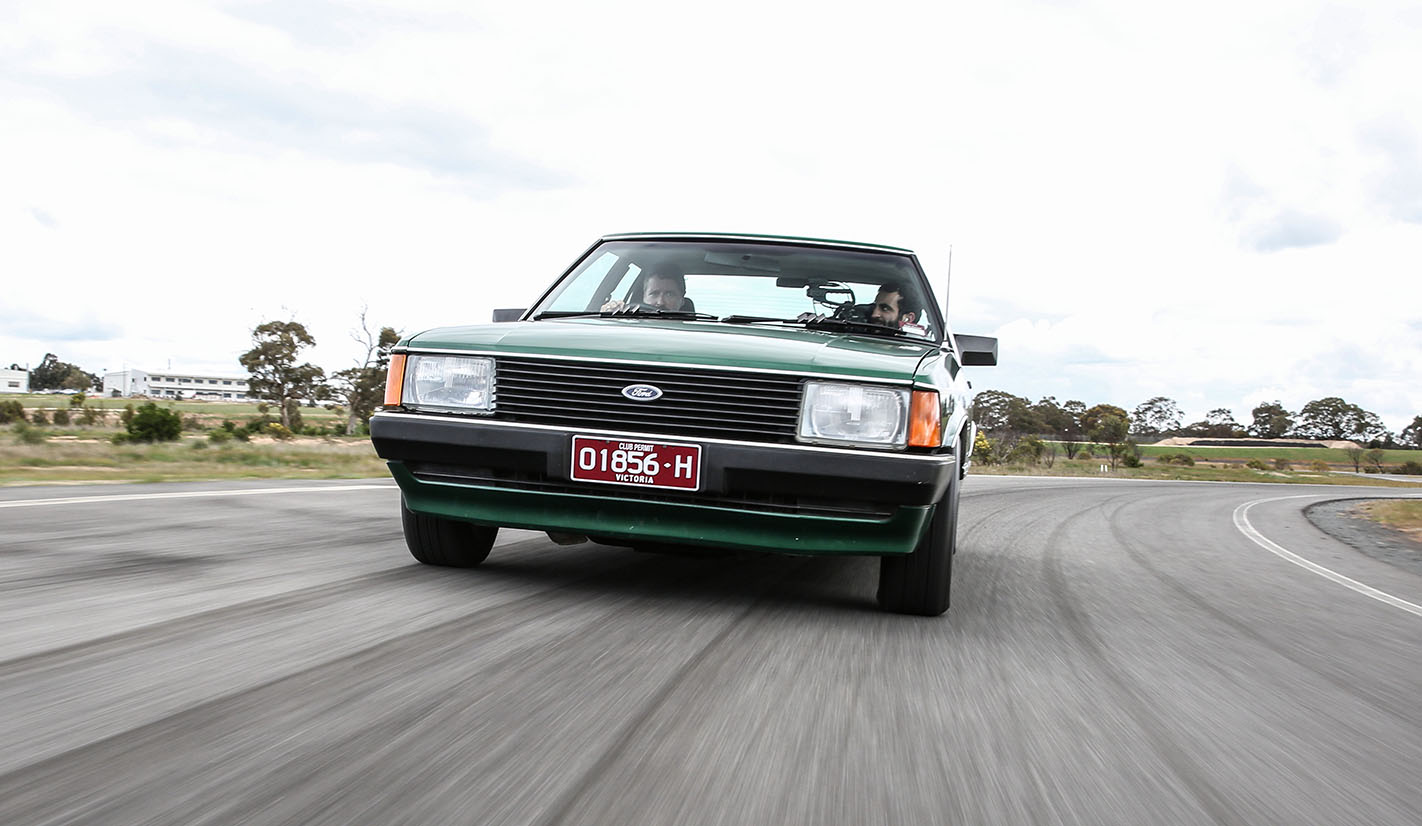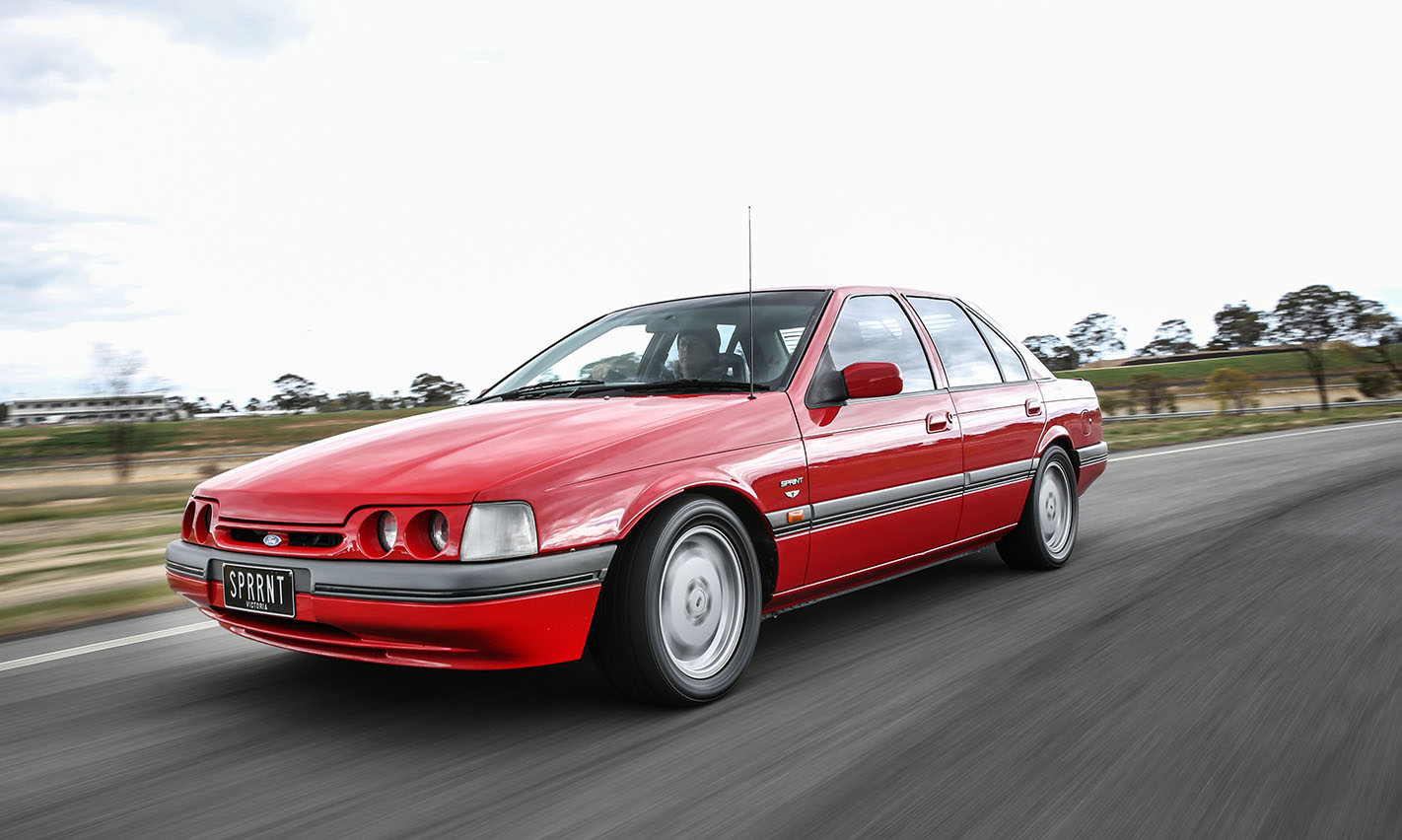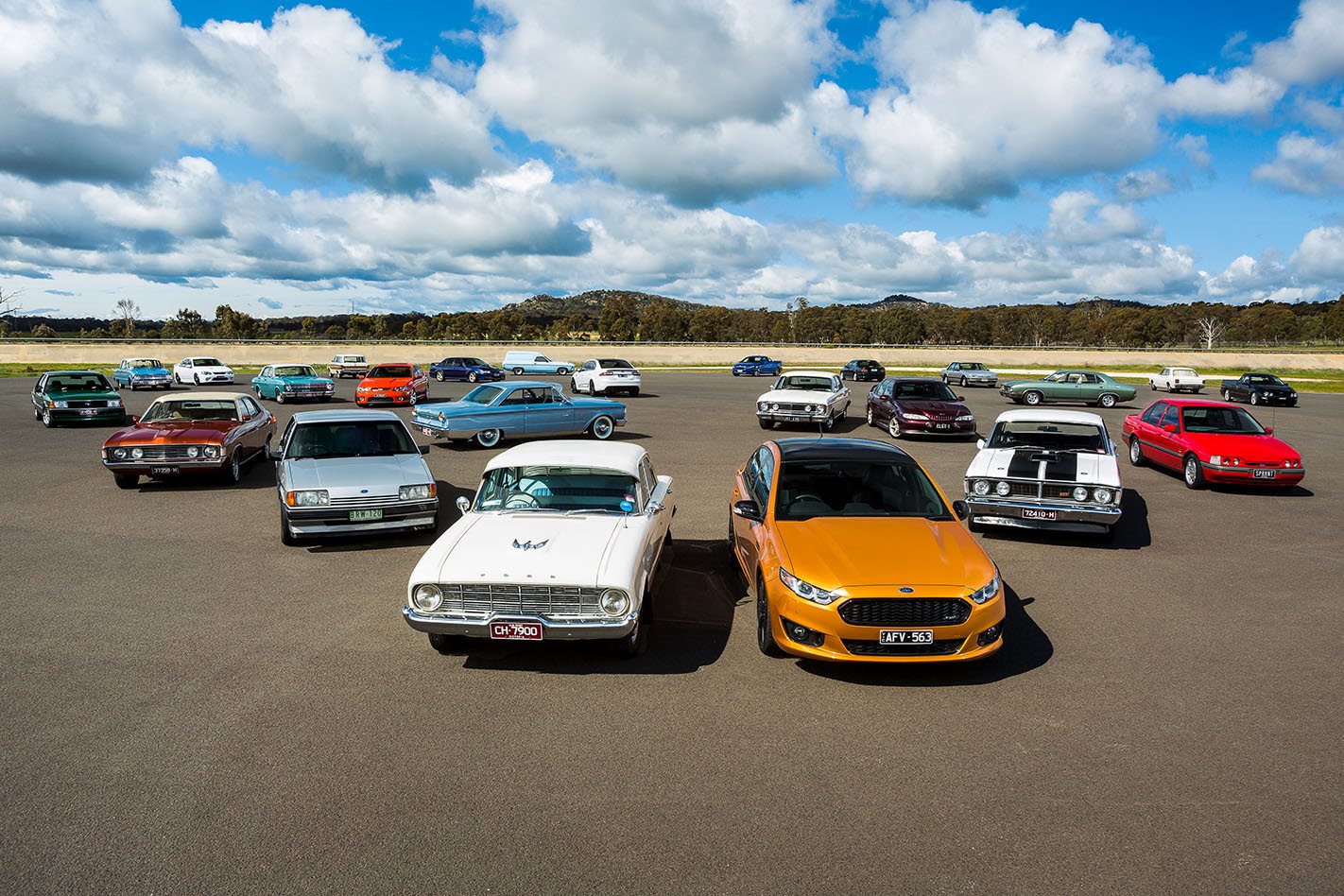The last time we assembled this many Falcons at Ford’s You Yangs proving ground in Victoria, it was to celebrate 50 years of the venerable nameplate.
A raising of the glass, if you will, for a one-time best-seller and long-time family favourite, etched into the Australian psyche over five decades of sales successes, racing victories and varying fortunes.
This article was originally published in the November 2016 edition of Wheels, and is being republished on the fourth anniversary of Ford Australia ceasing manufacturing in Australia.
What we didn’t know in 2010 was that the Falcon’s fate was tenuously close to being sealed. Rumours had been circulating since the late-’70s that all-Australian cars were living on borrowed time, so the fact the Falcon managed to hang on until 2016 deserves a celebration in itself.
Perhaps there are Valiant parallels here: it crept to a halt in 1981 but has never really left us, and still commands good money in its most-prized forms. Similarly, the Falcon might be about to exit Ford’s showrooms but it’s a long way from ending its tenure as the epitome of working-class cool. The exorbitant prices people will pay for a 1971 XY Falcon GT-HO Phase III, as well as anything vaguely similar in cylinder count and hip height, says the Falcon’s enduring appeal is, for now, everlasting.
Spanning eight generations and 24 model series, from the 1960 XK to the 2014 FGX, the Falcon has become part of the fabric of Aussie life. We’ve commuted in them, holidayed in them, raced them, made love in them, hailed a fare in one, and a few of us have probably even been born in one. From a drum-braked, bench-seated, three-on-the-tree base shitter to a supercharged, striped and spoilered slingshot, the Falcon has pretty much offered something for everyone. And we have one of every model code right here (bar a 1988 EA that pulled out the morning of our shoot). Better go exploring.

While the XK original has its charm, it’s an XL Falcon Squire wagon that I’m instantly drawn to. Along with the Futura sedan, it introduced some Detroit razzle-dazzle to Aussie driveways in 1962 and its contemporary retro appeal is seriously off the charts. Thing is, Aussies had an intense dislike for the Squire’s faux-wood panelling back in the day and hardly anyone bought it.
I’ve never actually driven a first-gen Falcon, only ridden in the back seat of a friend’s black XL Deluxe back in the ’90s, but all the hallmarks are there. Flat side windows, a deep-dished steering wheel offset to the right and unusually close to the driver’s chest, and an interior so overwhelmingly red it looks like a crime scene. It’s a reminder of an era when you moulded (as best you could) to your car, rather than your car moulding to you.
But it’s this car’s combination of a two-speed ‘Fordomatic’ column auto and standard 144 cubic-inch (2.4-litre) six that intrigues me. Plant your right foot on the move and it’s top gear or nothing. The Squire responds with a quaint swelling of engine noise, rather than any genuine surge in momentum. These days, it’s a wagon for looking cool in, cruising about town. It’s not a weekend getaway machine, unless you’re very patient.
The Squire’s most obvious successor from generation two is a stunning 1969 XW Fairmont 3.6 sedan – similarly luxe-focused, also modestly powered (relative to the 4.9-litre V8 it could’ve been optioned with), and also owned by Danny Zuclich of Early Bird Falcon Parts in Thomastown – but it feels generations newer than the faux woody.

Where the XL is clearly, design-wise, a car from the ’50s, the XW is a car for the ’70s. Its broad stance, the expansive rectangular view across its big bonnet and the vast leap in everything from drivetrain smoothness to seat comfort and driving position make the XW a proper Aussie road car, able to eat up enormous distances without raising a sweat.
What has never received much press, however, is the level of Australian design content in the ’69 XW Falcon. While the ’66 XR’s Aussie influence centred on the wagon, which was completely unique to us from the B-pillar back, the XW debuted an all-Aussie dashboard design that’s so much cooler than that of the slabby ’69 US model.
Admittedly, stuff like steering wheels and door pulls were shared, but only the wheels carried over to the all-Aussie 1972 XA. Famously snubbed in Wheels Car of the Year testing back in the day for being a simple re-body of the COTY-winning 1966 XR, the XA may still have leaf springs under its sloping derriere and recirculating-ball steering guiding the front, but it’s just soooo ’72.
That high window line, driver-focused ‘cockpit’ dash design, and the sedan’s space-ship tail-lights really stand out on this XA Fairmont 351 manual. Owned by Nick Blekic (who brought the same car here for Falcon’s 50th in 2010), it’s resplendent in that Copper Bronze paint colour so popular in the mid-’70s. A beige vinyl roof (with sunroof) is the icing on the cake, though it’s the serious muscle of this car’s 5.8-litre V8 that dominates its personality. Even in fourth gear, flooring the throttle sees the XA Fairmont lift its long nose and fill the surroundings with bent-eight thunder.

It’s a similar story in Chris van Gaans’ 1979 XD Fairmont Ghia 5.8 manual, carrying over the XA’s muscular drivetrain (and its underpinnings) into a strikingly modern bodystyle with a low belt-line and tonnes of glass. Right up to the ’90s, XDs were everywhere, but these days they’re a rare sight. And it’s that lack of familiarity that makes you appreciate just how stylish the XD sedan is, especially from the rear.
Inside, however, it’s a different story, with acres of black dashboard plastic at odds with the colour-coded class of older Falcon interiors. And to the left of the steering column sits that one constant in Falcons that lasted until the 1994 EF – the ‘umbrella’ handbrake.
Derided at the time as a symbol of Falcon’s conservatism, it’s part of the car’s character these days. Even the ’93 ED Falcon XR8 Sprint – this red example owned by Nick Blekic’s brother Mark – has one, and as I park his understated, elegantly powerful ‘sleeper’, my brain knows exactly where to reach for the handbrake.
The Blekic siblings are a great of example of how the Falcon has crept under the nation’s collective skin. A Blue Oval family through and through, calling newer supercharged V8s their own, as well as period classics like Nick’s XA, the Falcon is part of the narrative of their lives.

And that’s the overriding feeling here at You Yangs. Manufacturing may be about to cease, but the Falcon’s intrinsic appeal endures in its many glorious generations, and all its varied forms, bringing people together to celebrate a love of cars and share stories, short and tall. And they’re chuffed the FGX Sprints are going out on a high note.
Falcon’s sales may have slowly faded, but this bird’s spirit will keep soaring forever.





